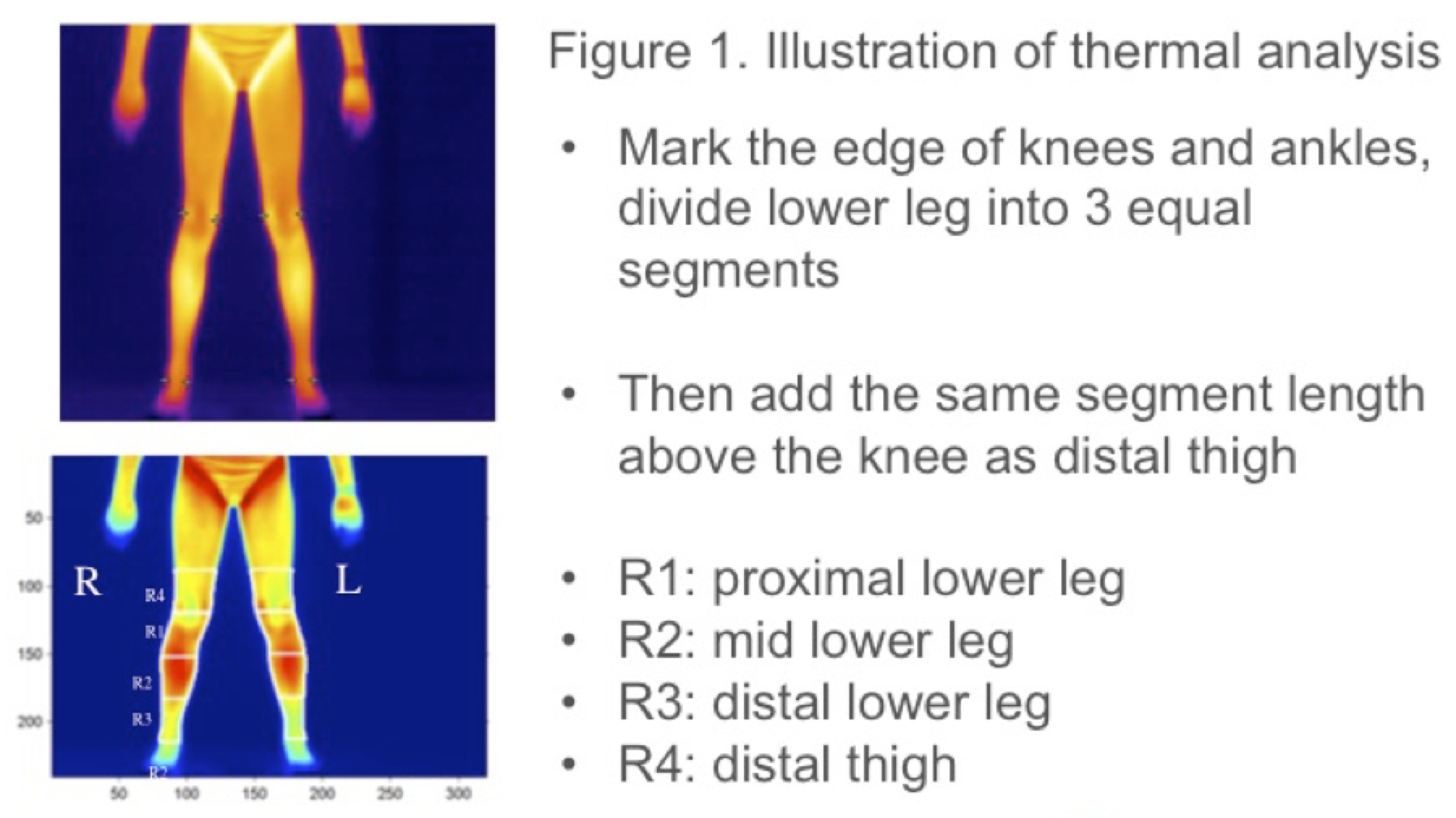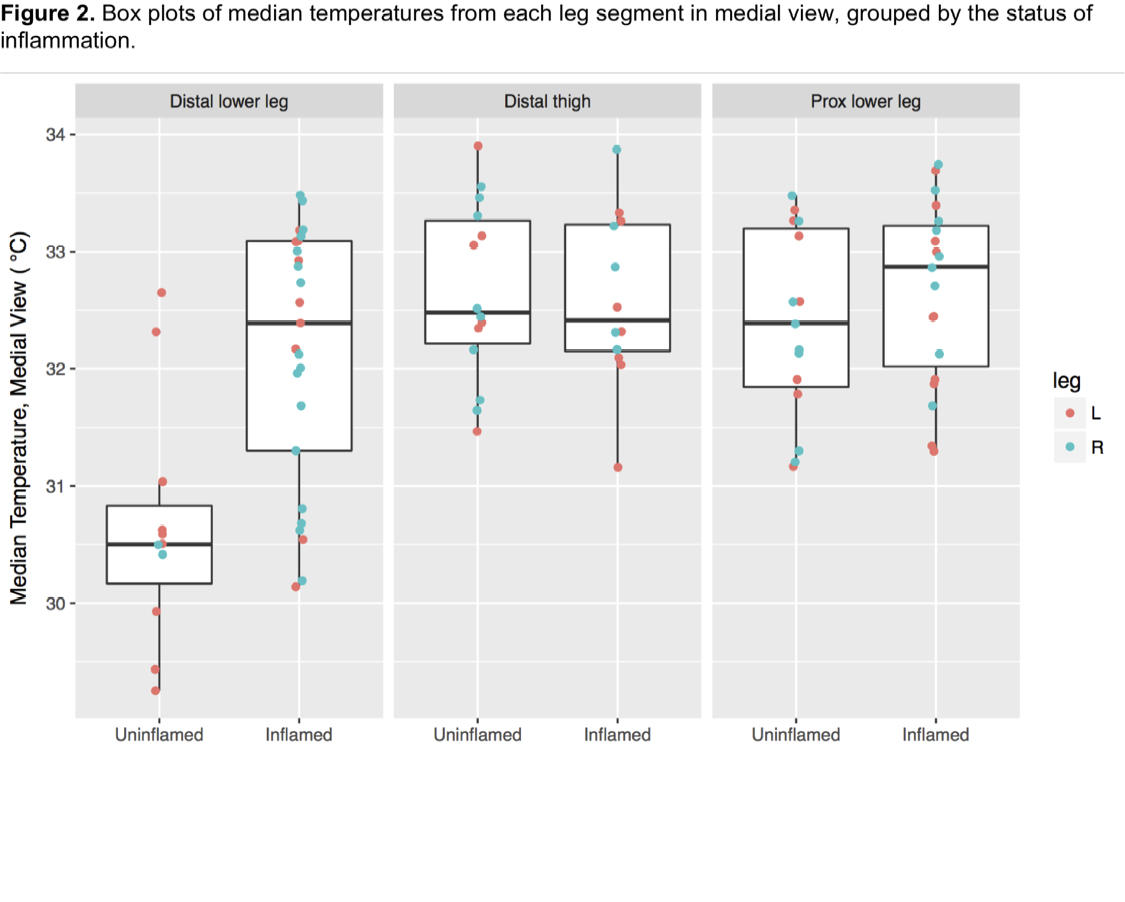Session Information
Date: Sunday, November 5, 2017
Session Type: ACR Poster Session A
Session Time: 9:00AM-11:00AM
Background/Purpose: Chronic nonbacterial osteomyelitis (CNO) is an autoinflammatory bone disease. For detection of active bone lesions, bone scintigraphy and magnetic resonance imaging (MRI) are much more sensitive than radiographs, but are more expensive and often require sedation for young children. A rapid and noninvasive imaging tool, infrared thermal imaging, was evaluated for its utility to detect active CNO lesions in extremities of children with CNO.
Methods: Children with suspected or established diagnosis of CNO in their lower extremities were enrolled. All subjects underwent infrared thermal imaging of both entire legs with four views each (anterior, posterior, medial, and lateral) and MRI examinations of their lower extremities. Relevant demographic, laboratory and clinical data were collected. Infrared thermal data were analyzed using custom software. Lower legs were divided equally into three segments longitudinally, and distal thigh was defined as the same length of proximal lower leg (Figure 1). Median and 95th percentile temperatures were recorded for each leg segment. MRI examinations were graded by a blinded pediatric musculoskeletal radiologist to determine the presence of bone edema as confirmation of inflammation within each segment. Temperature differences between inflamed and uninflamed extremities were evaluated using mixed-effects regression models.
Results: Nineteen children with MRI-confirmed CNO in their lower extremities were enrolled, Table 1. Overall, 26 distal, 2 mid (excluded from analysis), 18 proximal lower leg and 12 distal thigh lesions were detected on MRI. Inflamed distal lower leg segments had significantly higher median and 95th percentile temperatures than uninflamed counterparts (p<0.01 in all views). The mean difference between two groups ranged from 0.70C to 1.70C, with the greatest difference from medial view (Figure 2). Distal thigh and proximal lower leg temperatures did not differ between inflamed and uninflamed legs from any view.
Conclusion: Children with active CNO lesions in the distal lower leg exhibited higher regional temperatures versus healthy limbs. Further research is needed to evaluate infrared thermal imaging as a convenient and cost-effective tool to identify patients needing additional evaluation by MRI.
To cite this abstract in AMA style:
Zhao Y, Iyer R, Reichley L, Oron A, Kitsch A, Friedman S, Partridge S, Wallace CA. A Pilot Study of Infrared Thermal Imaging to Detect Active Bone Lesions in Children with Chronic Nonbacterial Osteomyelitis [abstract]. Arthritis Rheumatol. 2017; 69 (suppl 10). https://acrabstracts.org/abstract/a-pilot-study-of-infrared-thermal-imaging-to-detect-active-bone-lesions-in-children-with-chronic-nonbacterial-osteomyelitis/. Accessed .« Back to 2017 ACR/ARHP Annual Meeting
ACR Meeting Abstracts - https://acrabstracts.org/abstract/a-pilot-study-of-infrared-thermal-imaging-to-detect-active-bone-lesions-in-children-with-chronic-nonbacterial-osteomyelitis/



